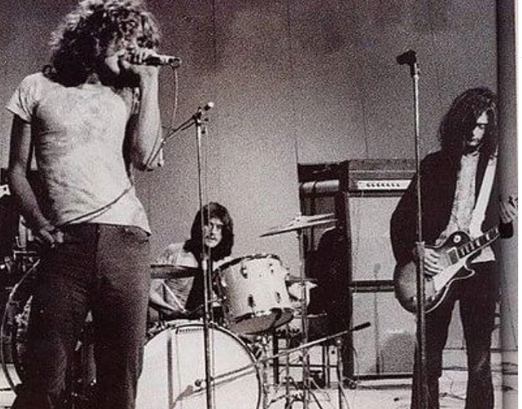1969 was the year in which man took a small step and humanity a great leap as Neil Armstrong said when he stepped on the surface of the Moon, the first man to do so for almost two and a half hours with his partner Edwin Aldrin, while the third Apollo 11 astronaut, Michael Collins, had to dance with the ugliest and wait to pick up the two privileged ones, it was also, many critics agree, an exceptional year for the history of the music of the second half of the 20th century, perhaps the best along with 1965, 1967 and 1970.
9. Otis Reading – My Girl
This immortal classic was composed by Smokey Robinson for The Temptations in 1964 and since its publication it has been covered countless times and in all styles by artists such as The Rolling Stones, The Mamas & The Papas, Dolly Parton, Michael Jackson, Stevie Wonder, Marvin Gaye, Percy Sledge, Phil Collins … and, of course, by the king of soul, Otis Reading.
8. Janis Joplin- Try (Just a Little Bit Harder)
Try (Just a Little Bit Harder), a classic in Janis Joplin’s discography, was the theme that opened her third album, I Got Dem Ol Kozmic Blues Again Mama !. Pearl (Pearl was Janis’s nickname) recorded the album with her Kozmic Blues Band and in just two months after its release on September 11, 1969, it had already gone gold.
7. In The Ghetto – Elvis Presley
Written by Marc Davis for the king of rock, In the Ghetto and originally titled The vicious circle, the hugely popular ballad tells the story of a young man raised in the Chicago ghetto who is shot and killed. The song has been covered on many occasions by artists as different as The Cranberries, Dolly Parton or, in Spain, none other than the Gypsy Prince himself.
6. Feelin’ Alright – Joe Cocker
Feelin ‘Alright was composed by Dave Mason to be included in the Traffic album with the same name and met relative success until Joe Cocker covered the song to open with him his first album, With a little help of my friends, and the popularity of the song rose like foam, even more so after the incredible interpretation that English made of it that same 1969 at the Woodstock festival.
5. In the Court of The Crimson King – King Crimson
In the Court of the Crimson King was King Crimson’s debut album whose title coincides with the title track. Led by the great Robert Fripp, the band was one of the pioneers of progressive rock heavily influenced by jazz and classical music. Its cover, one of the most iconic in history, was the only painting of a computer programmer Barry Godber, who died the following year, and today it is owned by Fripp himself.
4. Honky Tonk Women – The Rolling Stones
Honky Tonk women was written by Mick Jagger and Keith Richards while celebrating the new year in Brazil and was to be an acoustic country song. In fact, two versions were recorded, one in simple, which was the one that swept, and another with the title of Country Honk that was included in the album Let it Bleed. The song served as an introduction to Mick Taylor who had just replaced Brian Jones who left the group in June and died three weeks later.
3. Here Comes the Sun – The Beatles
Here comes the Sun is one of the few songs that the Lennon and McCartney tandem allowed George Harrison to sign throughout The Beatles’ career and it appeared on the legendary last album that the group recorded (not the last to be published), Abbey Road. A song that Harrison would re-record the following year for inclusion on his colossal triple album All Things Must Pass.
2. Proud Mary – Creedence Clearwater Revival
Creedence Clearwater Revival was born in 1967 thanks to the impulse of the Fogerty brothers, John and Tom, whose disagreements would ruin the band five years later. Proud Mary is a classic in the history of music that the group included in their album Bayou Country and it became their first great success reaching number one in the world charts and being covered by monsters like Elvis Presley, Tina Turner, Solomon Burke.
1. Whole Lotta Love – Led Zeppelin
Whole Lotta Love is the opening song for the group’s second album, Led Zeppelin II, and the group’s first single released as well as one of the most successful of their entire career. The must-have Jimmy Page, who used the reverse echo technique, played the sublime rift on his Les Paul and Robert Plan groaned non-stop as sound engineer Eddie Kramer moved the controls at random. The result was spectacular.

